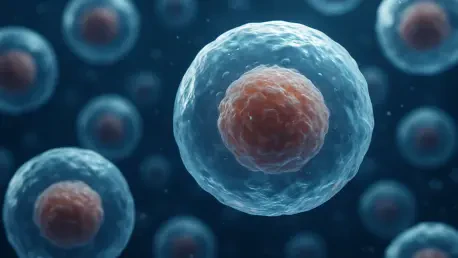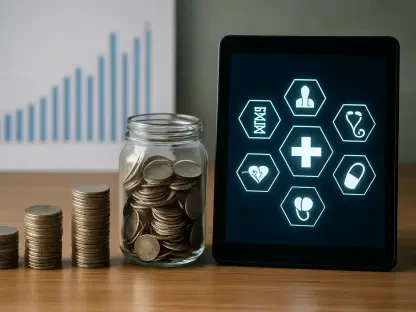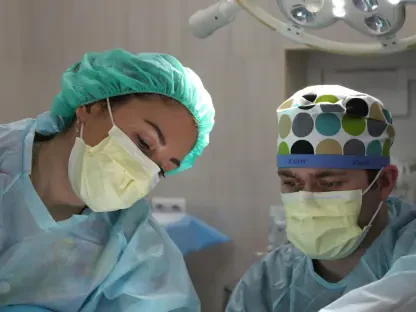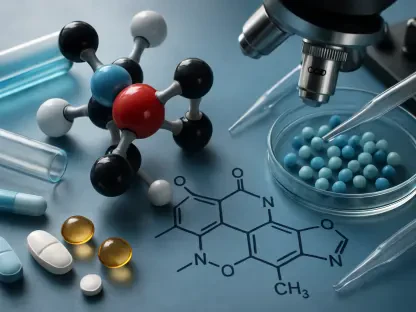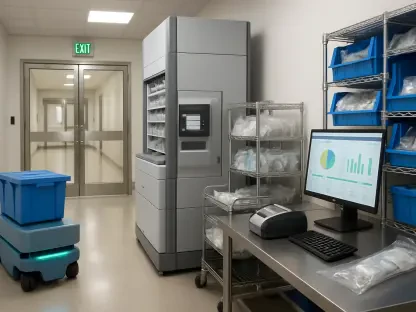In a world where neonatal brain injuries can alter the course of a child’s life before it even truly begins, a groundbreaking development in medical science offers a glimmer of hope for families facing such challenges with the potential to transform pediatric care. Researchers at Wilhelmina Children’s Hospital, part of UMC Utrecht in the Netherlands, have embarked on an innovative journey with intranasal stem cell therapy, targeting newborns who suffer brain damage from perinatal stroke or oxygen deprivation around birth. This non-invasive approach, which uses simple nasal drops to deliver mesenchymal stem cells, aims to repair damaged brain tissue and potentially prevent severe outcomes like cerebral palsy (CP), epilepsy, and developmental delays. The implications of this research could be transformative, addressing a critical gap in neonatal care where traditional treatments often fall short. As this therapy moves from early trials to broader studies, it raises a vital question: could this be the key to healing newborn brain damage? Let’s explore the details of this promising advancement and its potential to reshape pediatric medicine.
Pioneering Safety: Insights from the PASSIoN Trial
The PASSIoN (Perinatal Arterial Stroke Treated with Intranasal Stromal Cells) trial represents a significant first step in evaluating the safety of intranasal stem cell therapy for newborns. Conducted at UMC Utrecht, this study focused on ten infants who experienced perinatal stroke—a type of brain injury occurring just before, during, or shortly after birth. Each child received a single dose of stem cells through nasal drops within seven days of birth, and their progress was closely monitored over the following two years. The findings were notably encouraging: no side effects directly linked to the treatment were observed, and hospital readmissions for two of the infants were unrelated to the therapy. Moreover, none required ongoing medication post-discharge, suggesting a strong initial safety profile. Most striking was the developmental progress, with the majority of these infants walking earlier than expected and showing less brain tissue loss than typically seen in untreated cases with similar injuries.
Beyond the safety data, the PASSIoN trial revealed unexpectedly positive developmental outcomes that have sparked significant interest. Only 20% of the infants developed mild cerebral palsy, a rate far below the 50-70% observed in historical data for comparable cases. Despite initial brain scans indicating damage to motor pathways—a predictor of an 80% or higher risk of CP—the absence of epilepsy and vision problems in all participants added to the optimism. While a small number faced mild cognitive or language delays, and one struggled with significant sleep issues, these challenges were less severe than anticipated. Lead researcher Professor Manon Benders described the results as “truly extraordinary,” highlighting the potential of this therapy to alter the trajectory for high-risk newborns. These early findings, though limited by the study’s small scale, lay a crucial foundation for further exploration into how stem cells might mitigate the devastating effects of neonatal brain injuries.
Innovation in Delivery: The Power of Nasal Drops
A key factor setting this therapy apart is its method of administration—nasal drops. This non-invasive approach is particularly suited to newborns, whose fragility often makes surgical or invasive procedures risky and impractical. By delivering mesenchymal stem cells through the nasal passage, the treatment allows these cells to potentially reach the brain and initiate repair of damaged tissues, leveraging their natural regenerative properties. This method minimizes immediate risks and discomfort, offering a stark contrast to more aggressive interventions. The simplicity of nasal drops also suggests scalability, as it requires minimal specialized equipment or training compared to complex medical procedures. As neonatal care increasingly prioritizes safer and less intrusive options, this delivery system could set a new standard, not just for brain injury treatments but for a range of conditions affecting the youngest patients.
The significance of intranasal delivery extends beyond practicality to the broader trends shaping pediatric medicine. The focus on non-invasive techniques reflects a growing recognition of the unique needs of newborns, who cannot tolerate the stress of traditional treatments as older patients might. This approach aligns with ongoing efforts to harness stem cells’ potential in a way that is both effective and gentle, ensuring that therapeutic benefits do not come at the cost of added harm. Additionally, the success of this method in the PASSIoN trial hints at possibilities for other neurological conditions, where accessing the brain without invasive means remains a significant challenge. If validated through further research, intranasal stem cell therapy could inspire similar innovations, paving the way for a new era of treatments that prioritize both efficacy and the delicate nature of neonatal health.
Balancing Hope with Scientific Rigor
The results of the PASSIoN trial, while promising, are met with a measured perspective from the research team at UMC Utrecht, including Professor Benders and neuroscientist Professor Cora Nijboer. They emphasize that the primary goal of this initial study was to assess safety, not to prove the therapy’s effectiveness in treating brain damage. The lower incidence of cerebral palsy and other complications compared to historical data is encouraging, yet the small sample size and absence of a control group limit the ability to draw definitive conclusions. This cautious outlook underscores a commitment to scientific integrity, ensuring that enthusiasm does not outpace evidence. The team’s focus remains on the need for larger, more comprehensive studies to determine whether these early positive signs translate into confirmed benefits for a wider population of affected infants.
This balance between hope and caution also highlights the complexities of pioneering medical research, particularly in neonatal care. The profound implications of reducing lifelong conditions like cerebral palsy are tempered by the understanding that premature conclusions could lead to false expectations or unforeseen risks. The researchers are keenly aware that while the absence of side effects and improved developmental markers are significant, they represent only the beginning of a long journey. Multidisciplinary collaboration, involving pediatricians, neuroscientists, and other experts, is crucial to navigating these challenges. The path forward involves not only validating the therapy’s impact but also ensuring that any future implementation is grounded in robust data, protecting both the integrity of the science and the well-being of vulnerable newborns.
Future Horizons: The iSTOP-CP Trial
Looking ahead, the research is set to advance with the iSTOP-CP trial, scheduled to begin in early 2026, involving 162 newborns with brain damage from perinatal stroke or severe oxygen deprivation. This randomized, controlled study will assign participants to receive either stem cells or a placebo within seven days of birth, tracking their development until they reach 24 months of age. Unlike the PASSIoN trial, this design aims to provide definitive evidence on the therapy’s effectiveness by comparing outcomes across groups. The larger sample size and structured methodology will address limitations of the initial study, offering clearer insights into whether intranasal stem cells can consistently reduce the incidence and severity of neurological impairments. This trial represents a critical step toward potentially integrating the therapy into standard neonatal care practices.
In addition to clinical outcomes, the iSTOP-CP trial will incorporate a cost-effectiveness analysis led by health economist Renske ten Ham. This component will evaluate the financial implications of the therapy compared to existing care models, considering direct medical costs as well as the broader impact on quality of life for children and their families. Such an assessment is vital, as it addresses the practical feasibility of scaling the treatment if proven effective. The excitement surrounding this upcoming research, as expressed by Professor Benders, reflects years of laboratory groundwork and a shared vision to transform outcomes for neonatal brain injuries. Should the trial confirm the therapy’s benefits, it could mark a turning point, offering a new tool to lessen the lifelong burden of conditions that currently have limited treatment options.
Human Stakes and Broader Implications
At its core, the pursuit of intranasal stem cell therapy transcends laboratory results and clinical data—it touches the lives of families facing unimaginable challenges. The possibility of a treatment that could improve a child’s developmental trajectory carries immense emotional weight for parents who often receive devastating diagnoses with little hope for intervention. The dedication of the research team, evident in their meticulous approach and years of preparatory work, mirrors a deep-seated commitment to alleviating the impact of conditions like cerebral palsy. This human element fuels the drive behind each trial, reminding all involved that behind every statistic lies a child’s future, potentially reshaped by a few drops of a groundbreaking solution.
Yet, the broader implications of this research extend to the landscape of neonatal medicine as a whole. Success in this arena could catalyze further exploration into stem cell applications for other conditions, reinforcing the role of regenerative therapies in addressing previously untreatable injuries. Challenges remain, including the need for long-term follow-up to understand the therapy’s enduring effects and risks. The journey from promising trial to standard practice is fraught with hurdles, but the potential to reduce the societal and personal toll of neonatal brain damage provides a powerful motivator. As research progresses, it holds the promise of not only healing individual infants but also inspiring a paradigm shift in how the medical field approaches early-life interventions.
